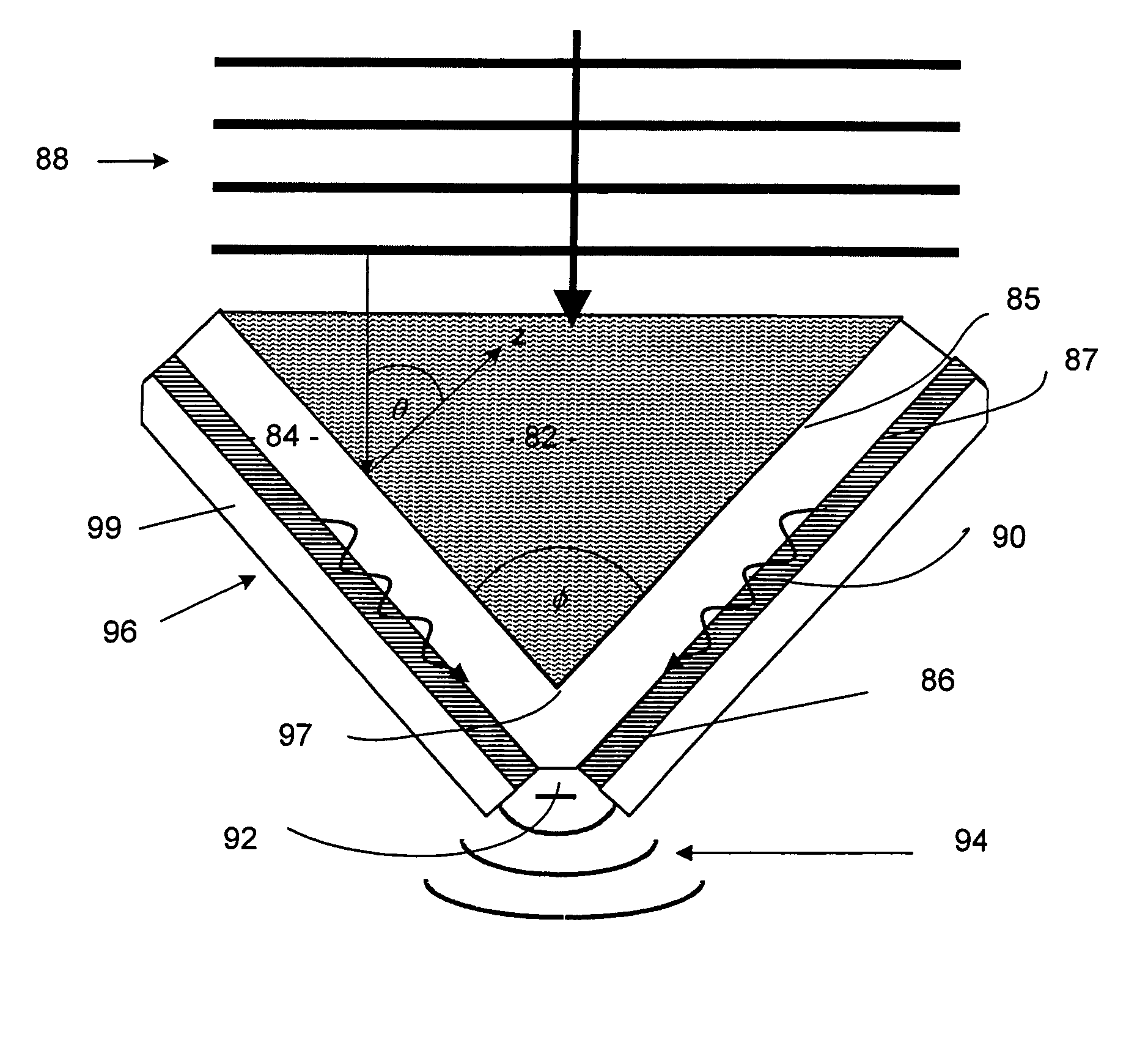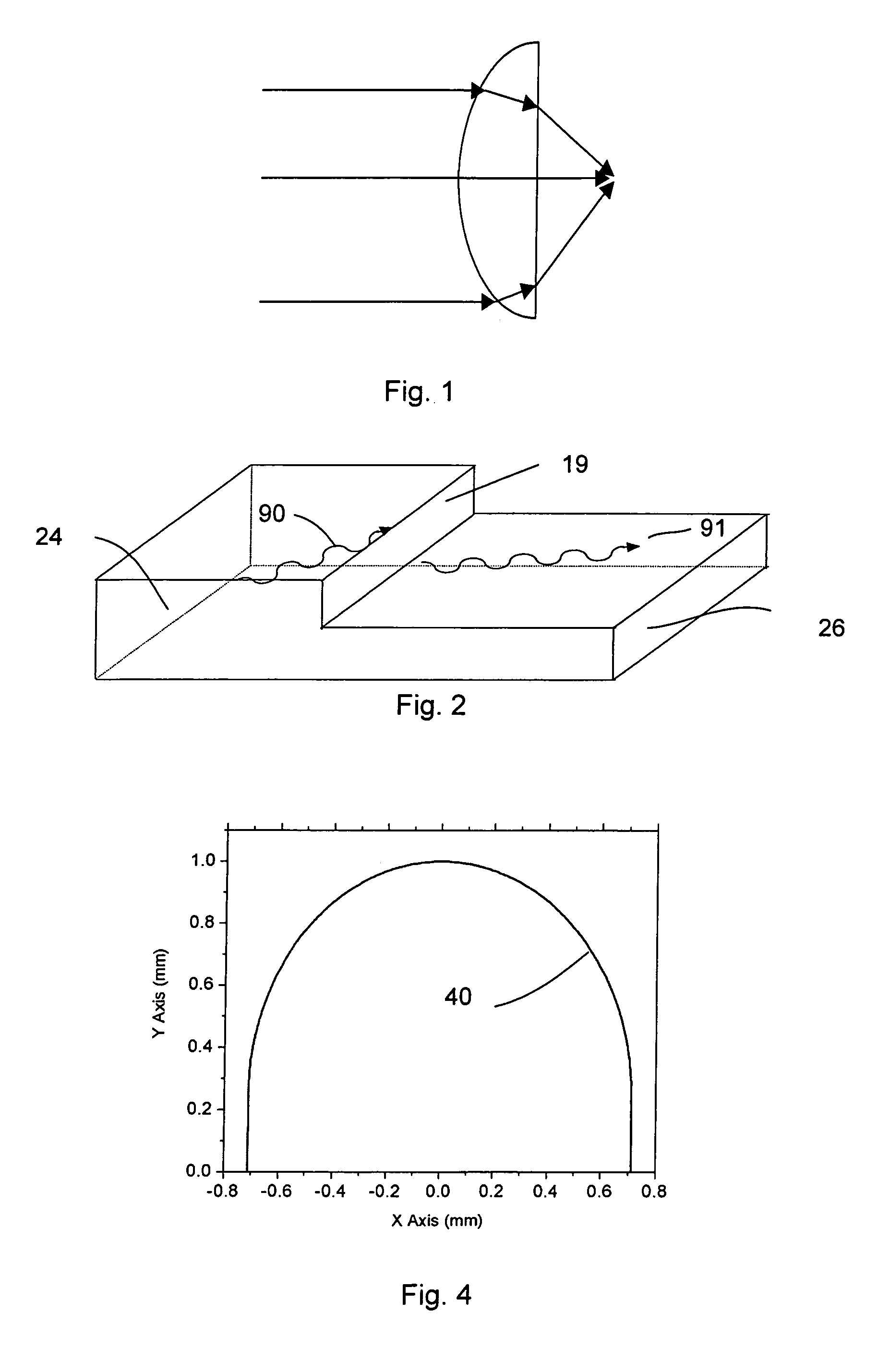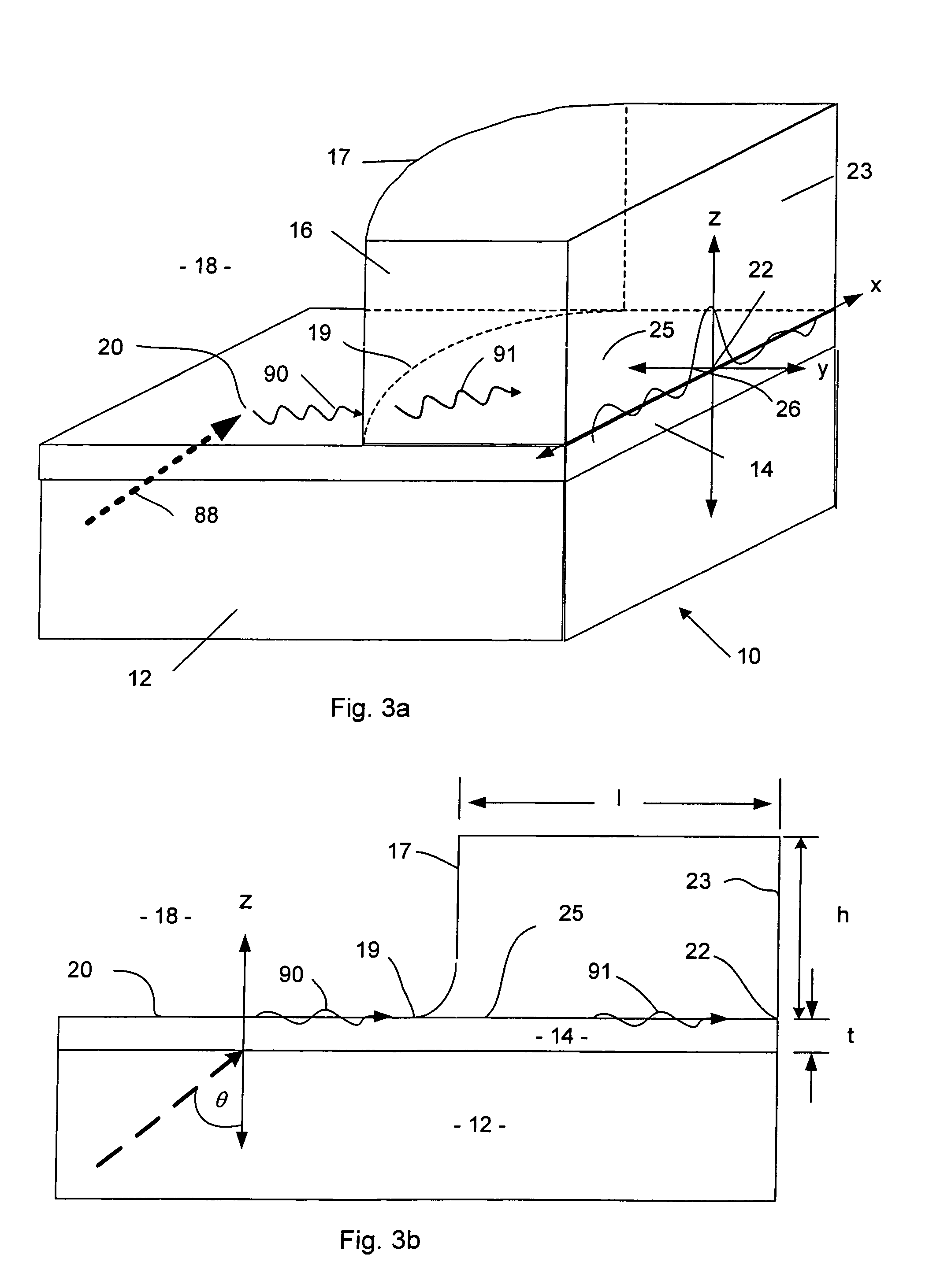Apparatus for focusing plasmon waves
a technology of plasmon waves and apparatus, applied in the field of near field optics, can solve the problems of 25 nm diameter of heated surface and too small throughput to be practical for hamr
- Summary
- Abstract
- Description
- Claims
- Application Information
AI Technical Summary
Benefits of technology
Problems solved by technology
Method used
Image
Examples
Embodiment Construction
[0031]The Appendix describes the science of plasmon waves, in connection with FIGS. 1 and 2, and provides a theory of operation of present invention. The first embodiment of present invention is illustrated in FIGS. 3a and 3b.
[0032]FIG. 3a is a perspective view of a plasmon lens 10 that converts incident light beam 88 into a plasmon wave 90, diffracts the waves at a lens surface 17 into a refracted plasmon wave 91 that is focused on a spot 22 located on the a flat surface 23 of the lens 10. At the flat surface 23, the plasmon wave 91 converts back into light, which may be used to observe a sample in a microscope application, or to heat the surface of a disc in a magnetic recording application.
[0033]The lens 10 structure consists of a pair of high index dielectric layers 12, 16 which may be made of SiO2, SiN, Ta2O5, ZnS, TiO2, Si or other high index materials known in the art sandwiching a thin (typically 14 which may be made of gold, silver, aluminum, or copper. The space 18 above ...
PUM
 Login to View More
Login to View More Abstract
Description
Claims
Application Information
 Login to View More
Login to View More - R&D
- Intellectual Property
- Life Sciences
- Materials
- Tech Scout
- Unparalleled Data Quality
- Higher Quality Content
- 60% Fewer Hallucinations
Browse by: Latest US Patents, China's latest patents, Technical Efficacy Thesaurus, Application Domain, Technology Topic, Popular Technical Reports.
© 2025 PatSnap. All rights reserved.Legal|Privacy policy|Modern Slavery Act Transparency Statement|Sitemap|About US| Contact US: help@patsnap.com



